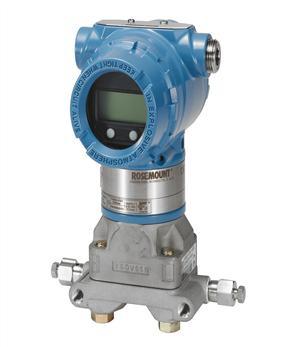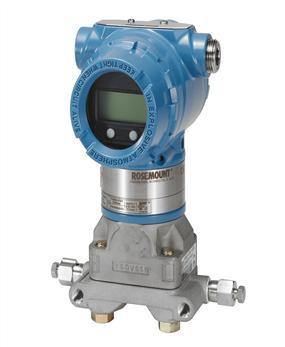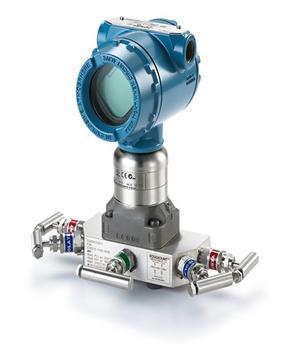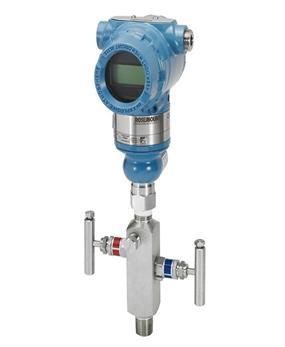BLOG
Pressure Transmitters vs. Pressure Transducers: Learn the Differential Characteristics
Brian Craig
April 06, 2021
Pressure transmitters and pressure transducers, both act as advanced pressure gauges. Although the purpose of utilizing both these pressure gauges is nearly the same, the devices possess different technical specifications. Often the manufacturers and users of pressure transmitters and pressure transducers consider these devices interchangeable. However, they are not really interchangeable. They can be used for pressure level measurement but the performance characteristics of these two pressure gauges vary in various aspects. When it comes to the selection of a transmitter or a transducer, these devices are often pitted against each other due to incomplete knowledge about their functioning. This post offers an introduction and differentiating characteristics of pressure transmitters and pressure transducers which makes the selection convenient.
Before getting to the differential characteristics of pressure transmitters and pressure transducers, let us introduce both pressure gauges individually.
Before getting to the differential characteristics of pressure transmitters and pressure transducers, let us introduce both pressure gauges individually.
Pressure Transducer
The pressure transducer is a piezo-resistive or thin-film pressure sensor. This device features a pressure sensor and a device body that is interconnected with an electric circuit. The physical pressure variation sensed by the pressure sensor is translated to an electronic value that can be processed for calculations. The pressure transducer only converts a physical pressure measurement into an electronically readable value. The standardization or compensation of pressure measurement is not done by the transducer.
Pressure Transmitter
The pressure transmitters are upgraded sub-set of the transducers. These devices linearize, amplify, and compensate the pressure measurements before displaying the reading. Transmitters offer smart measurement of pressure, therefore, pressure monitoring and control activities can be performed using a pressure transmitter.
Now that both the pressure gauges are introduced, let us discuss a few differentiating characteristics of both devices.
Now that both the pressure gauges are introduced, let us discuss a few differentiating characteristics of both devices.
Differences between Pressure Transducers and Pressure Transmitters
Although designed for the same purpose, the performance characteristics of these devices differ in the following aspects.
- Pressure transducers ideally translate the physical pressure variables into the analog signals. On the other hand, the transmitter can translate the physical pressure variable into voltage signals, milliamp signals, or digital signals.
- The transducers do not standardize or compensate the pressure value displayed as reading. The transmitter on the other hand linearizes, amplifies, modifies, and digitalizes the pressure value based on the type of output demanded by the user.
- The output signal of the transducer is proportional to supply, therefore, it gives a ratiometric output. Commonly, transducer output is in the form of mV. The transmitter output can be in the form of voltage, current, frequency, or digitalized reading.
- Transducers measure the pressure at live zero conditions. Whereas, the transmitter can be calibrated and tested for zero span adjustment.
- The transducers require integration with Supervisory Control and Data Acquisition (SCADA) control system for telemetric or remote monitoring and control operations. However, the electronic circuitry of the pressure transmitters can be calibrated by using HART protocol. These transmitters are called smart transmitters.
Considering the above-mentioned differentiating factors of pressure transmitters and pressure transducers, the choice between both of the pressure gauges can be made. Along with the operational requirements, the quality of equipment must be considered during purchase. For that, you should source the pressure transmitters or transducers from the trusted manufacturers or suppliers like The Transmitter Shop (TTS). The company offers a wide range of transmitters and transducers from high-end brands like Fisher, Rosemount, Foxboro, Honeywell, etc.
Related Posts
Exploring Density and Viscosity Measurement in Industrial Processes
Pressure Monitoring in Pump Systems: A Comprehensive Guide
Common Challenges in Air Flow Measurement and How to Overcome Them
Monitoring and Controlling Energy Production in Power Plants
Understanding the Impact of Pressure Fluctuations on Drying Performance
Understanding Pressure Ranges and Units for Fluid System Monitoring
The Benefits and Challenges of HVAC System Balancing
An Ultimate Selection Guide for Flow Transmitters
Procedure to Calculate Accuracy of Pressure Transmitter Discussed
Multivariable Transmitter: What Is It and How Does It Work?
How Do You Test for 4 to 20mA Signal in a Pressure Transmitter?
Temperature Transmitter: How to Select The Efficient One for Your Application?
Flow Meter vs Flow Transmitter: Know the Difference
Absolute and Gauge Pressure Transmitters - Overview and Working Principle
HART Communication Protocol: Overview, Working Principle, Benefits in Industrial Automation
What is Absolute Pressure Transmitter & how does it work?
How Do You Calibrate A Flow Transmitter?
Remote Seals: Significance, Working Principle & Applications
How to Select Pressure Transmitter for Your Application?
How to Choose Diaphragm Seals for Your Application?
Difference in Conventional Transmitters and Smart Transmitters
What Are Diaphragm Seals and Their Types?
Rosemount 2088 Vs Rosemount 3051 – A Few Points of Differences Discussed
Rosemount 3051S vs 3051C Transmitter – What is Your Choice?
Impact of Shock and Vibration on Pressure Transducer
Safety Tips for Differential Pressure Transmitter Operation
Factors to Consider When Choosing a Pressure Transmitter Manifold
Tips to Improve the Performance of Pressure Sensors
Important Calibration Tips for Pressure Sensors
5 Most Popular Pressure Transmitter Technologies
Factors of Consideration When Choosing Pressure Transmitters
Tips to Augment the Performance and Service Life of Pressure Transmitter
Factors To Be Considered While Differentiating $40 and $400 Pressure Transmitters
An Unconventional Guide to Selecting the Right Pressure Sensor
3 Major Pressure Transmitter Technologies That Made the Device Popular
The Features and Benefits of Rosemount 1199 Direct Mount Transmitters
What are the Steps Involved in Calibrating Pressure Gauge?
All Important Questions on Reconditioned Transmitters Answered
Is Remanufactured Transmitter a Better Option than a New One?
Differential Pressure Transmitters: How Do They Help in Flow Measurements?
3 Whats that Explain How Often You Should Calibrate Pressure Transducer
Guidelines for Troubleshooting Pressure Transducers
Learn How to Calibrate a Pressure Transmitter – II
Learn How to Calibrate a Pressure Transmitter
Know Three Interesting Uses of Pressure Transmitters
Pressure Monitoring in Pump Systems: A Comprehensive Guide
Common Challenges in Air Flow Measurement and How to Overcome Them
Monitoring and Controlling Energy Production in Power Plants
Understanding the Impact of Pressure Fluctuations on Drying Performance
Understanding Pressure Ranges and Units for Fluid System Monitoring
The Benefits and Challenges of HVAC System Balancing
An Ultimate Selection Guide for Flow Transmitters
Procedure to Calculate Accuracy of Pressure Transmitter Discussed
Multivariable Transmitter: What Is It and How Does It Work?
How Do You Test for 4 to 20mA Signal in a Pressure Transmitter?
Temperature Transmitter: How to Select The Efficient One for Your Application?
Flow Meter vs Flow Transmitter: Know the Difference
Absolute and Gauge Pressure Transmitters - Overview and Working Principle
HART Communication Protocol: Overview, Working Principle, Benefits in Industrial Automation
What is Absolute Pressure Transmitter & how does it work?
How Do You Calibrate A Flow Transmitter?
Remote Seals: Significance, Working Principle & Applications
How to Select Pressure Transmitter for Your Application?
How to Choose Diaphragm Seals for Your Application?
Difference in Conventional Transmitters and Smart Transmitters
What Are Diaphragm Seals and Their Types?
Rosemount 2088 Vs Rosemount 3051 – A Few Points of Differences Discussed
Rosemount 3051S vs 3051C Transmitter – What is Your Choice?
Impact of Shock and Vibration on Pressure Transducer
Safety Tips for Differential Pressure Transmitter Operation
Factors to Consider When Choosing a Pressure Transmitter Manifold
Tips to Improve the Performance of Pressure Sensors
Important Calibration Tips for Pressure Sensors
5 Most Popular Pressure Transmitter Technologies
Factors of Consideration When Choosing Pressure Transmitters
Tips to Augment the Performance and Service Life of Pressure Transmitter
Factors To Be Considered While Differentiating $40 and $400 Pressure Transmitters
An Unconventional Guide to Selecting the Right Pressure Sensor
3 Major Pressure Transmitter Technologies That Made the Device Popular
The Features and Benefits of Rosemount 1199 Direct Mount Transmitters
What are the Steps Involved in Calibrating Pressure Gauge?
All Important Questions on Reconditioned Transmitters Answered
Is Remanufactured Transmitter a Better Option than a New One?
Differential Pressure Transmitters: How Do They Help in Flow Measurements?
3 Whats that Explain How Often You Should Calibrate Pressure Transducer
Guidelines for Troubleshooting Pressure Transducers
Learn How to Calibrate a Pressure Transmitter – II
Learn How to Calibrate a Pressure Transmitter
Know Three Interesting Uses of Pressure Transmitters











